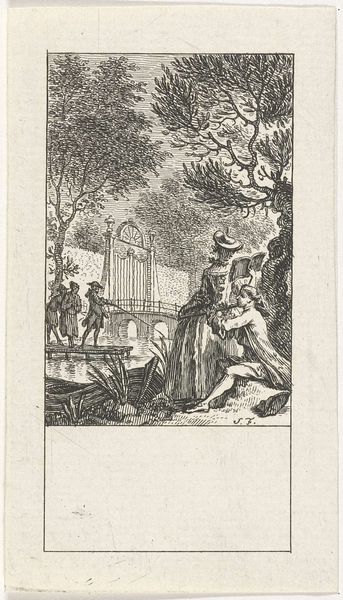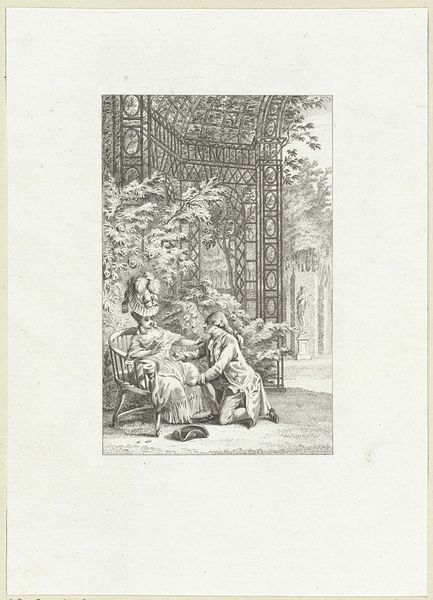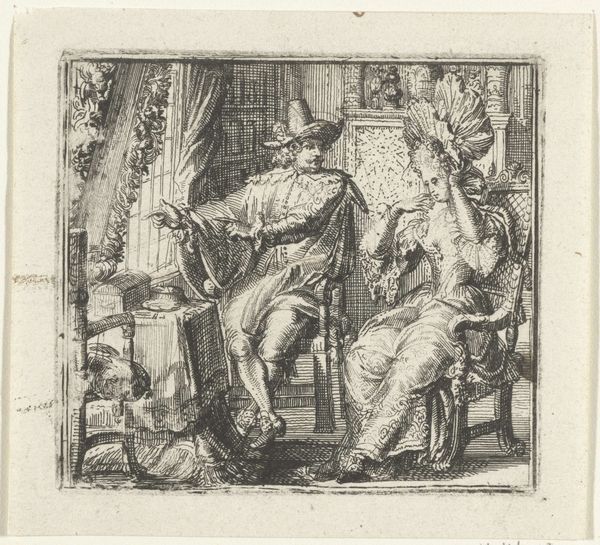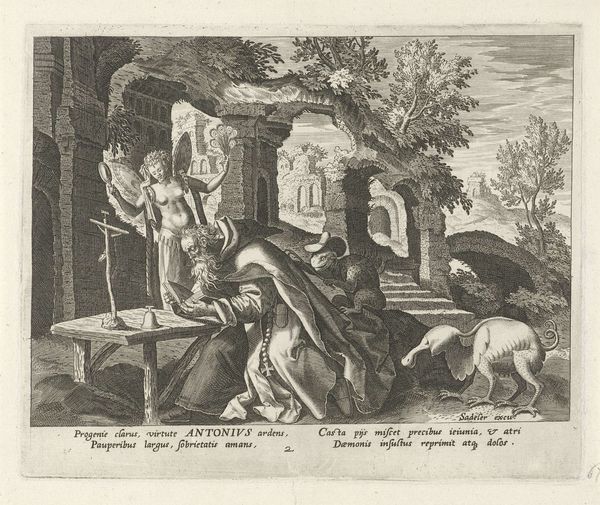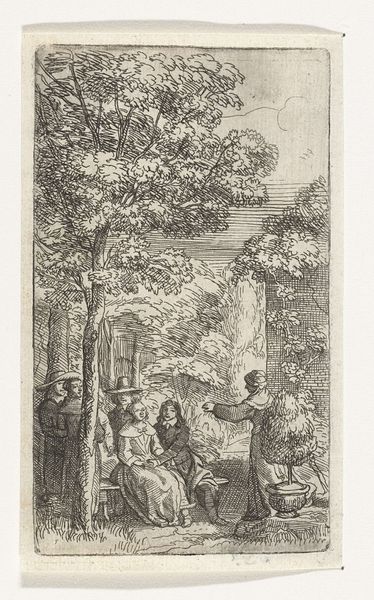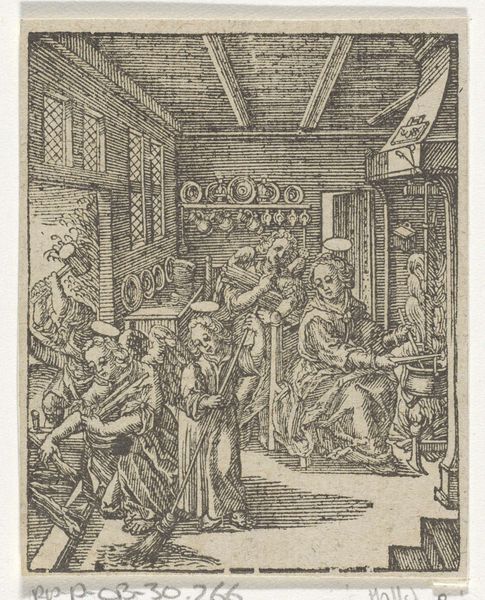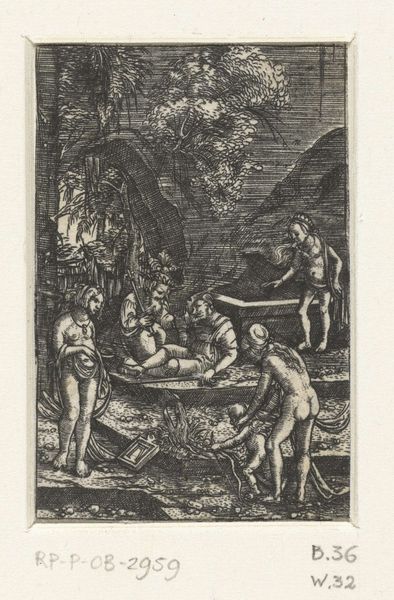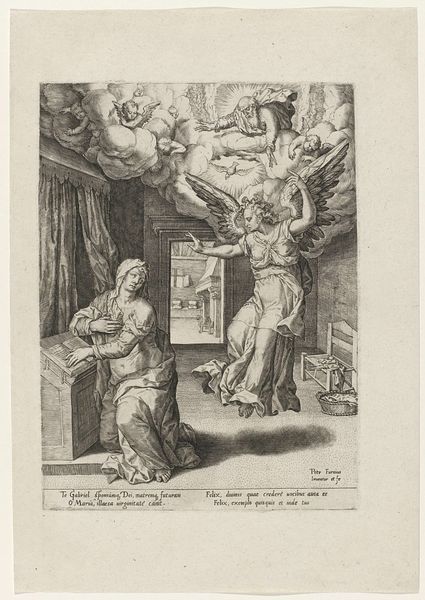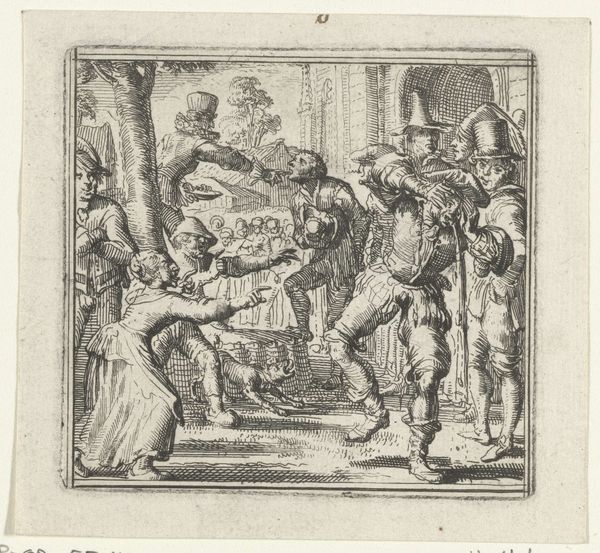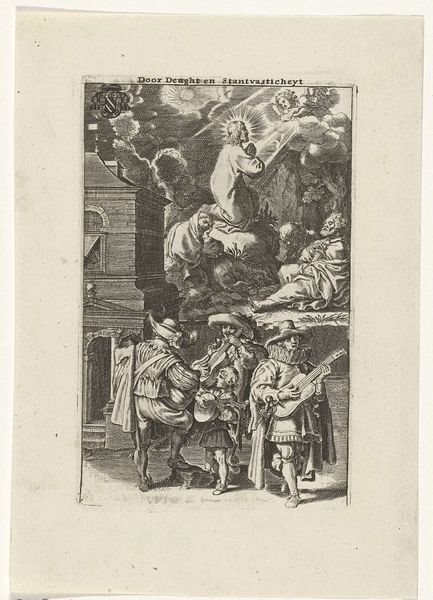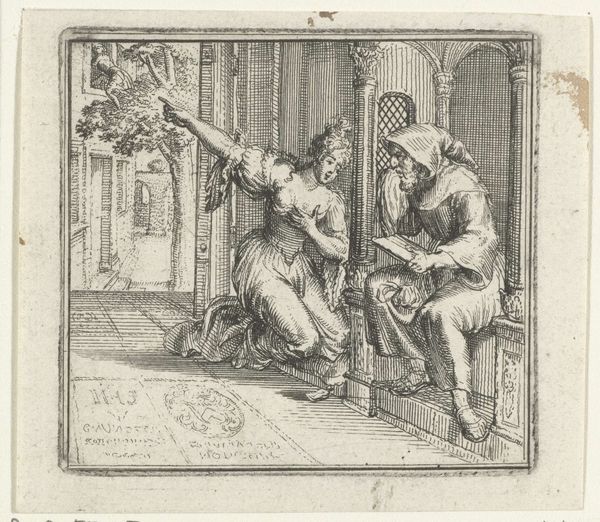
drawing, print, etching, engraving
#
drawing
#
aged paper
#
narrative-art
#
baroque
# print
#
pen sketch
#
etching
#
old engraving style
#
sketch book
#
landscape
#
personal sketchbook
#
sketchwork
#
pen-ink sketch
#
pen work
#
sketchbook drawing
#
genre-painting
#
sketchbook art
#
engraving
Dimensions: height 74 mm, width 81 mm
Copyright: Rijks Museum: Open Domain
Curator: Welcome. Today we'll be looking at "Illustratie voor de Decamerone van Boccaccio," an etching and engraving by Romeyn de Hooghe, dating back to 1697 and residing here at the Rijksmuseum. Editor: Well, my first impression is of intricate theatricality. The detailed cross-hatching creates a mesmerizing depth. Curator: Exactly! De Hooghe was a master printmaker. We need to consider the context: he was working in a time of intense competition within the print market. The etching allows for a greater circulation of these narrative scenes, enabling the tales of Boccaccio to reach a wider audience. Editor: Notice how the garden acts almost like a stage set? The figures are arranged in relation to one another with this clear focal point at the rear, a depiction of what appears to be a form of punishment. Curator: Absolutely, the scene likely alludes to one of the many narratives from Boccaccio’s "Decameron". I think, the choice of this specific tale highlights the cultural attitudes towards morality and punishment in 17th-century society. Editor: Beyond that narrative, I am fascinated by the tonal contrasts created solely by the density of the lines. It creates a chiaroscuro effect that animates the entire composition. Curator: What I also find remarkable is how De Hooghe skillfully navigates both high art and popular culture. While rooted in the tradition of fine art printmaking, it's intrinsically linked to the culture of storytelling and mass reproduction of images. Editor: I think it also underscores how a work, even one ostensibly illustrating a narrative, can stand as a captivating visual object when we look closely at the compositional devices employed by the artist. Curator: This detailed engraving exemplifies how the circulation of prints played a significant role in shaping cultural values and how artists used material skills to comment on the stories they told. Editor: Indeed, and by studying this play of lines, of light and shadow, we can glean not only De Hooghe’s technical expertise but also the very atmosphere of the narrative.
Comments
No comments
Be the first to comment and join the conversation on the ultimate creative platform.
